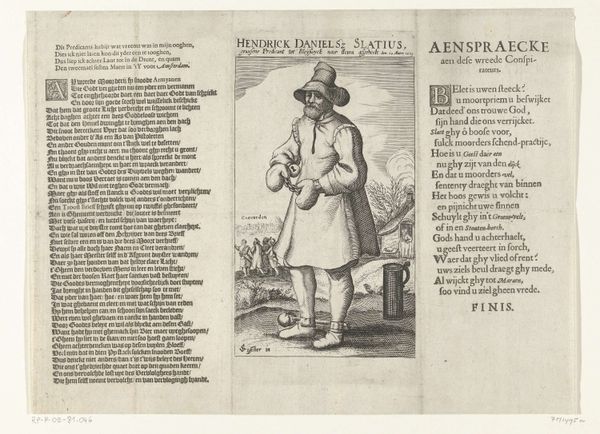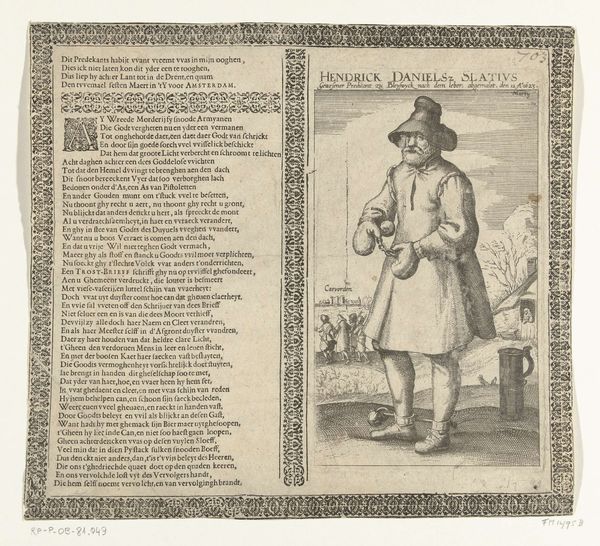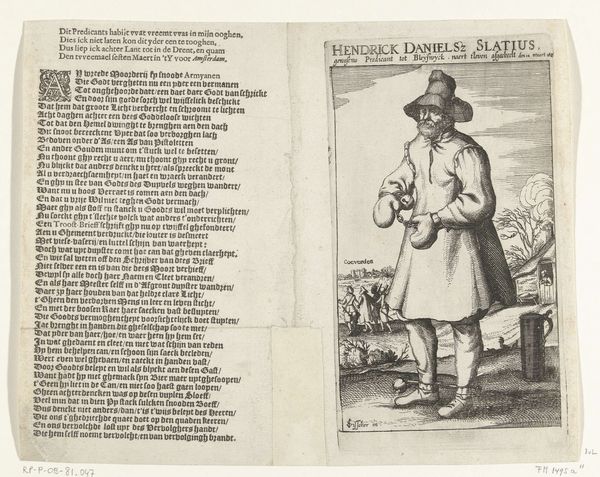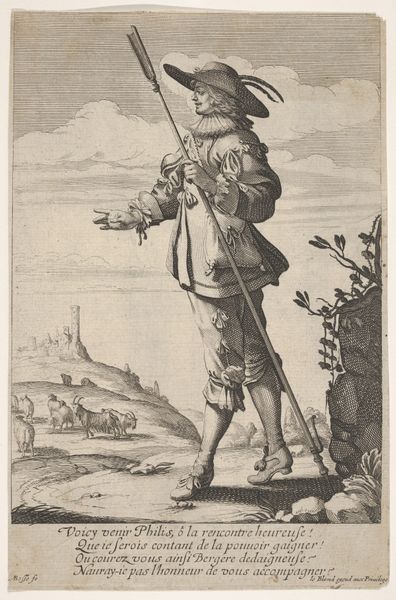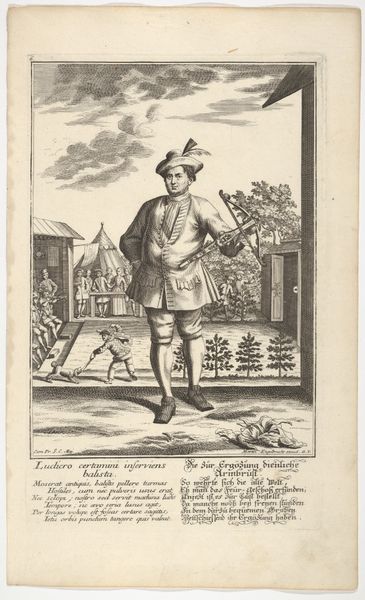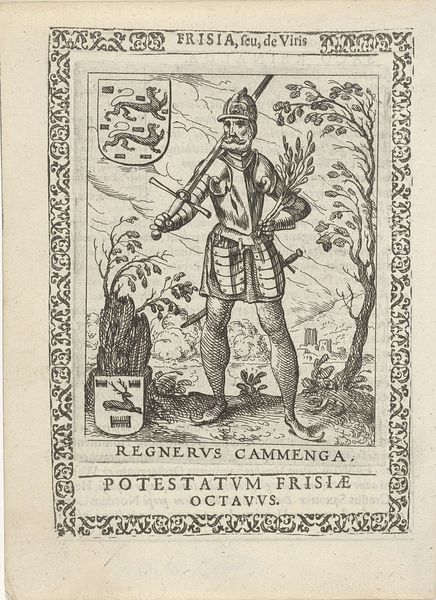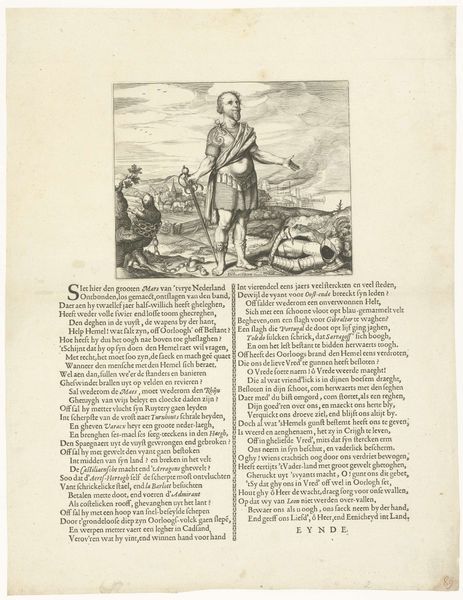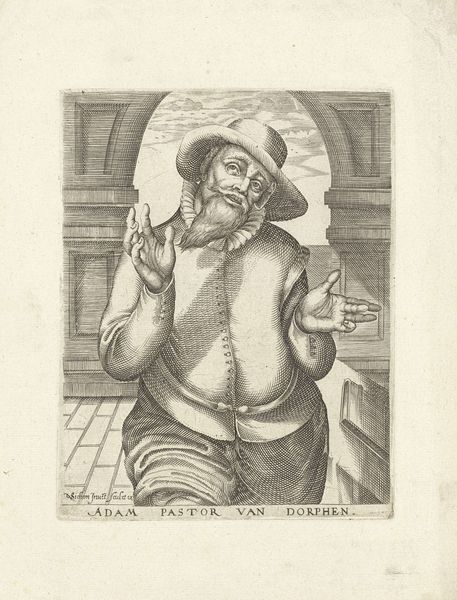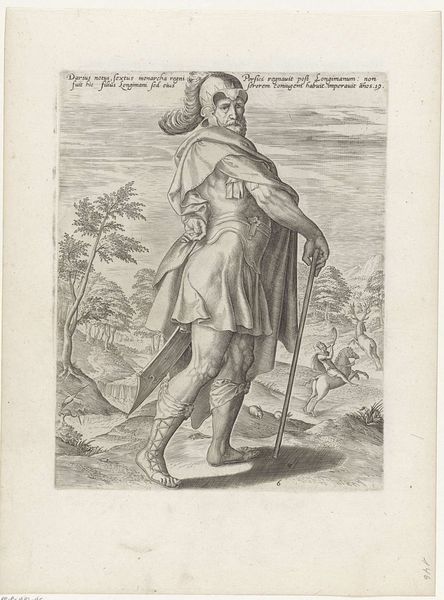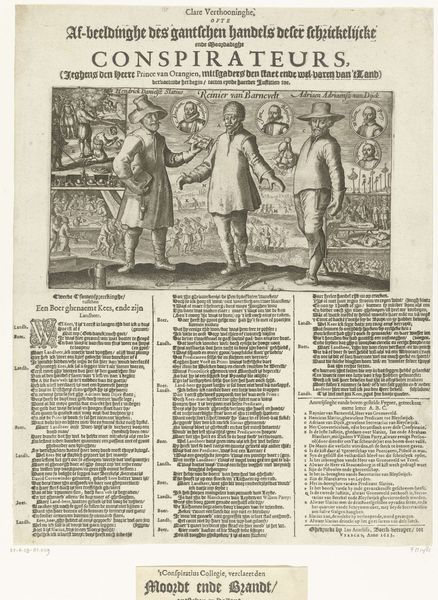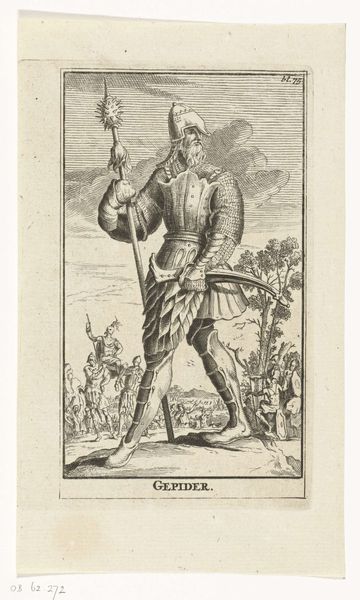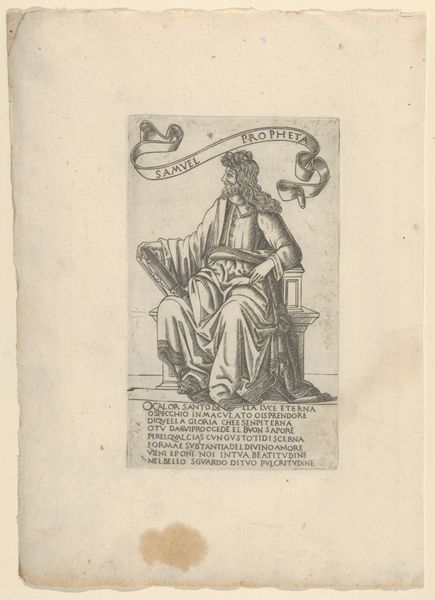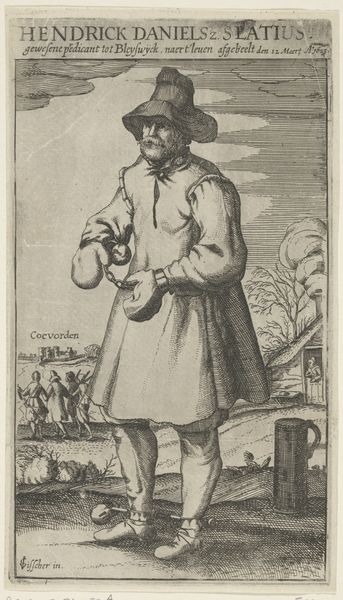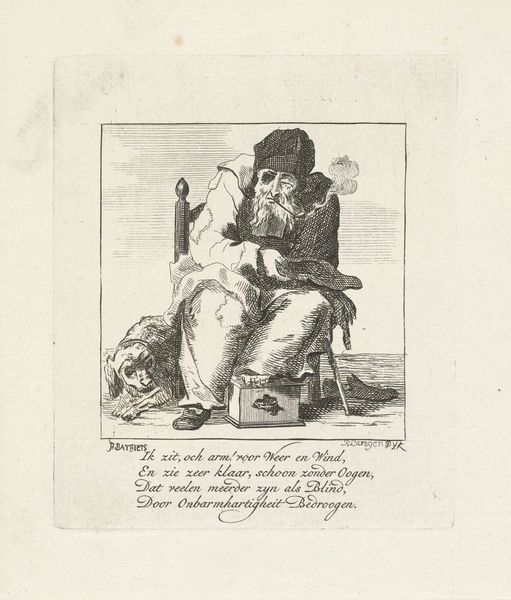
print, engraving
#
portrait
#
baroque
# print
#
genre-painting
#
engraving
Dimensions: height 243 mm, width 250 mm
Copyright: Rijks Museum: Open Domain
Curator: This print, created in 1623 by Claes Jansz. Visscher, depicts Henricus Slatius with hand and foot restraints. The medium is engraving, a process that allows for such sharp lines and intricate detail. What’s your immediate take? Editor: Stark and somber. The figure, bound and seemingly isolated, projects an image of confinement—both physical and perhaps ideological. The stark contrast in the engraving adds to the drama. It begs the question: who was this person and why the chains? Curator: Slatius was a preacher, a controversial figure accused of conspiracy. Considering the time, the imagery likely served as a political tool. We're looking at an era of intense religious and political conflict within the Dutch Republic. Editor: Exactly. The print transcends being just a portrait; it's an indictment, crafted through a specific visual vocabulary that resonated with the socio-political landscape. How does the act of printing itself— the material reproduction of this image—impact its reception? The engraving, printed for circulation, turns Slatius into a symbol, doesn't it? Curator: Absolutely. The creation and distribution of this print reflects not only artistic skill but the infrastructure of visual propaganda at the time. It allows us to investigate how printed material informed public opinion and solidified certain political narratives. And think about the artist Visscher and their role; were they consciously contributing to this propaganda? Editor: Indeed. And, crucially, it highlights the political role of imagery in shaping the early modern public sphere. Visscher’s visual choices, the very act of documenting Slatius in chains, contributed to the broader rhetoric surrounding him. It encourages consideration of who controlled the image, the means of its production and circulation, and what kind of power dynamics were at play here. Curator: It truly does highlight the complex relationship between art, politics, and public opinion during the Baroque period. By studying the print’s materiality and historical context, we gain crucial insight. Editor: An engraving, therefore, isn’t just a static object; it’s a record of a specific historical moment.
Comments
No comments
Be the first to comment and join the conversation on the ultimate creative platform.
